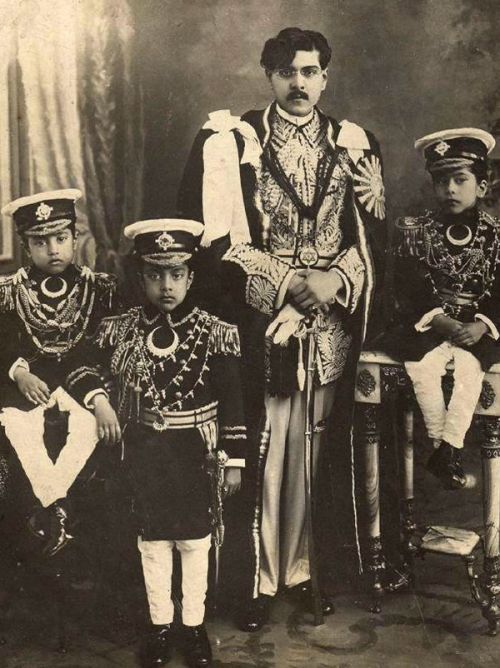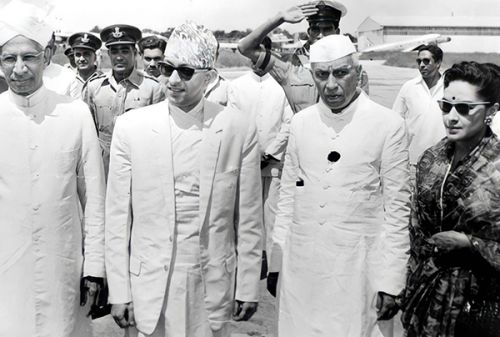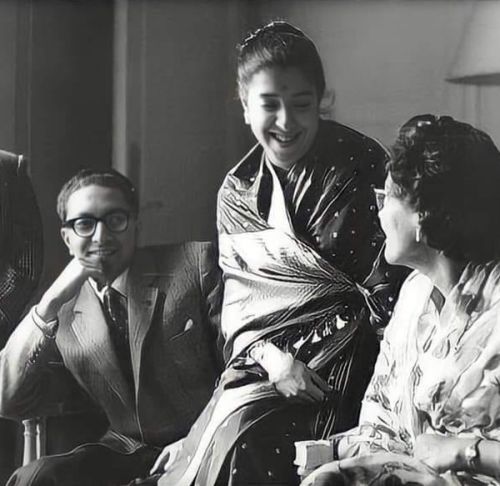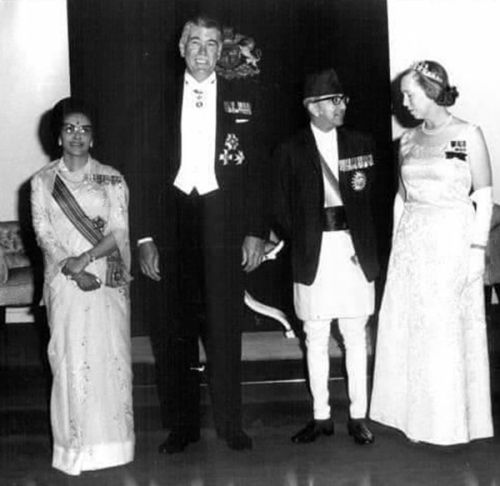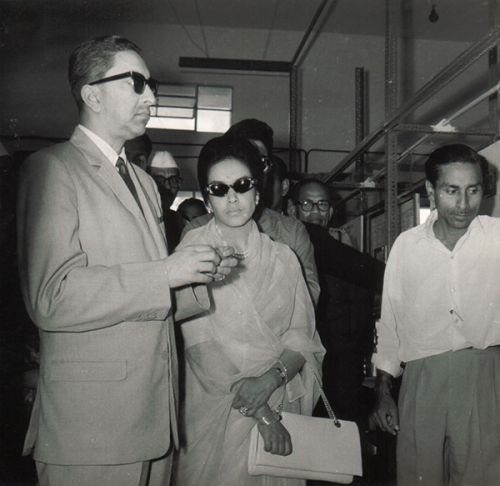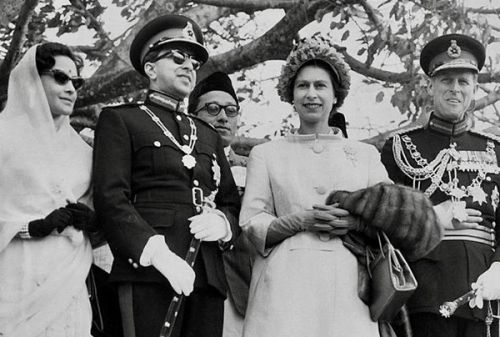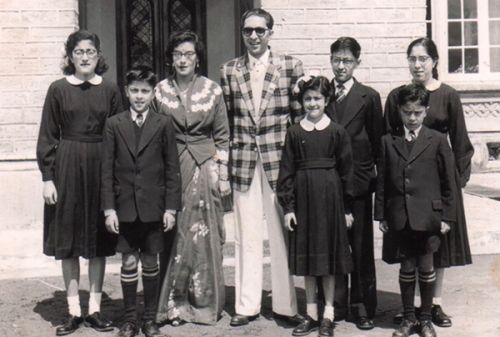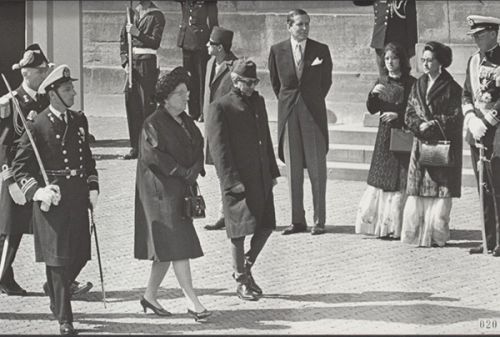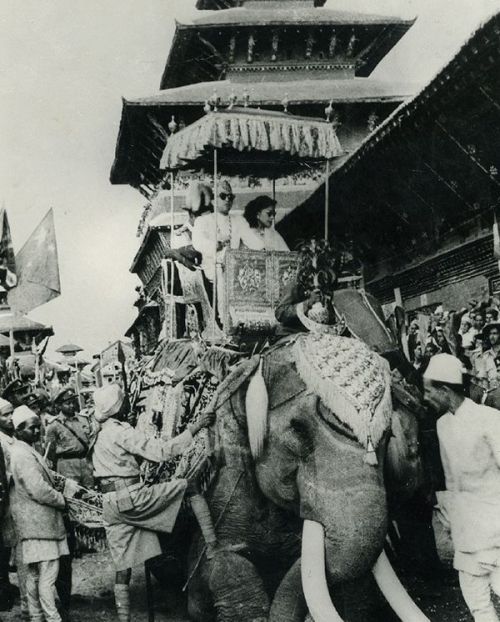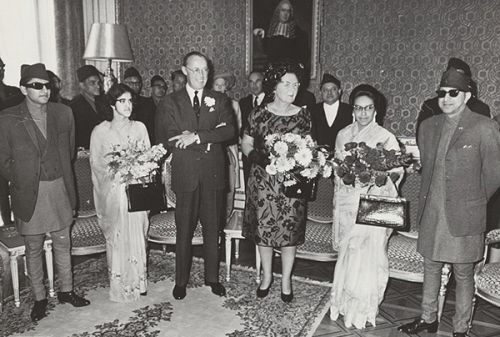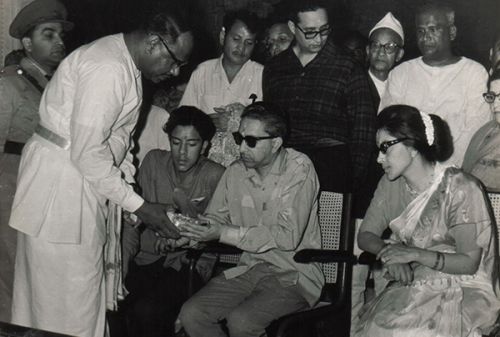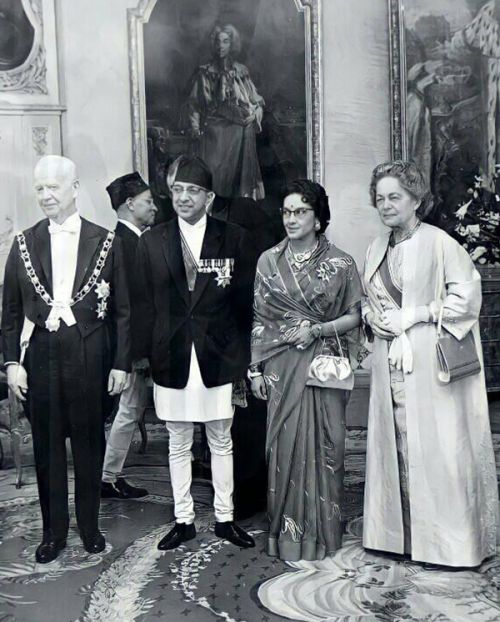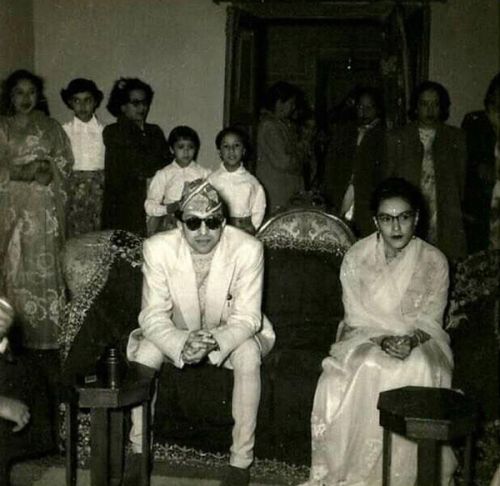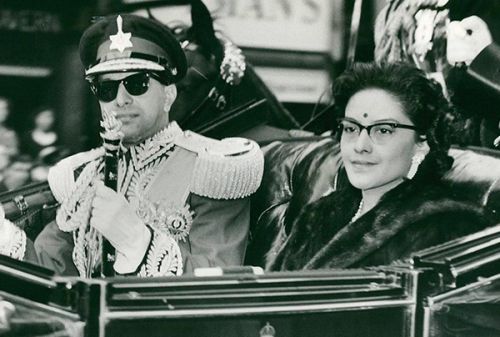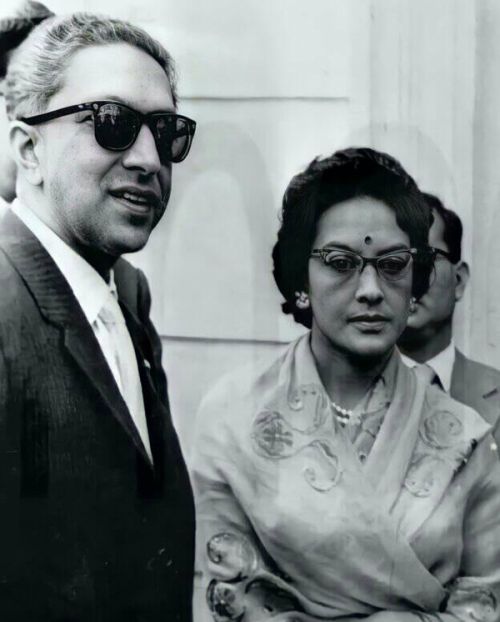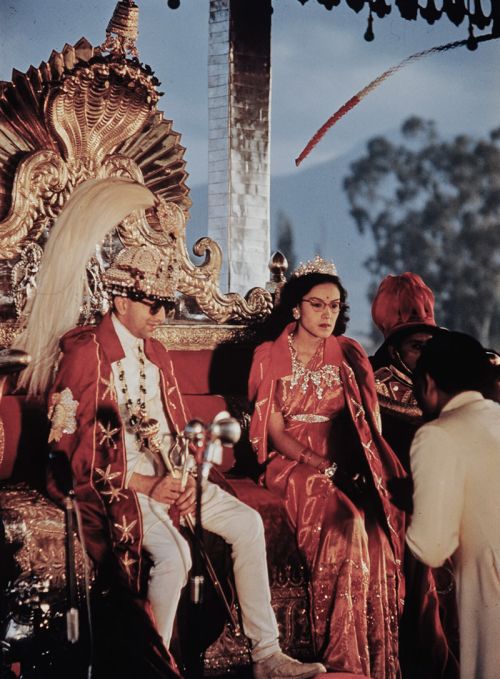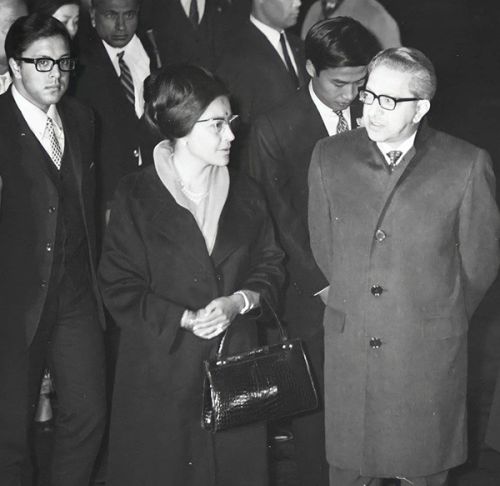
HM KING
MAHENDRA BIR BIKRAM SHAH DEV

The role played by Mahendra in establishing Nepal in the international arena is unparalleled. He initiated the task of receiving membership of the United Nations (UN) to establish Nepal as an independent nation.
“खोसेको रोटीले मेरो पेट भरिन्न
मागेको धोतिले मेरो लाज छोपिन्न
धसिएर हातपाउ झरि जाउन औँला
तर कोही अगाडि यो हात जोडिन्न”




EARLY LIFE
His Royal Highness Crown Prince Mahendra Bir Bikram Shah was the first born son of His Majesty King Tribhuvan Bir Bikram Shah Dev and Her Majesty Queen Kanti Rajya Laxmi Devi Shah. He was born on 11 June 1920 at the Narayanhiti Palace. He has six younger siblings, HRH Prince Himalaya Bir Bikram Shah, HRH Princess Trilokya Rajya Laxmi Shah, HRH Princess Vijaya Rajya Laxmi Shah, HRH Princess Bharati Rajya Laxmi Shah, HRH Prince Basundhara Bir Bikram Shah and HRH Princess Nalini Rajya Laxmi Shah.
Like his father and siblings, HRH Prince Mahendra did not receive a formal education. He was privately educated inside the palace and learned politics, economics and Nepali literature, history and culture.
On 8 May 1940, His Royal Highness Crown Prince Mahendra married Miss Indra Rajya Laxmi Rana, daughter of General Hari Shamsher Jung Bahadur Rana. Together they had three sons, HRH Prince Birendra Bir Bikram Shah, HRH Prince Gyanendra Bir Bikram Shah and HRH Prince Dhirendra Bir Bikram Shah, and three daughters, HRH Princess Shanti Rajya Laxmi Shah, HRH Princess Sharada Rajya Laxmi Shah and HRH Princess Shobha Rajya Laxmi Shah.
On 4 September 1950, Her Royal Highness Crown Princess Indra Rajya Laxmi Devi Shah died due to a complication following the birth of their sixth child, HRH Prince Dhirendra. Following her death, the kingdom’s first maternity hospital, the Prasuti Griha, was built in the grounds of Charburja Durbar in her memory.
After the death of the Crown Princess, HRH Crown Prince Mahendra married Her Late Royal Highness Crown Princess Indra’s younger sister and his sister-in-law, Miss Ratna Rajya Laxmi Rana. Her Royal Highness Crown Princess Ratna Rajya Laxmi Devi Shah chose not to bear any children of her own as a mark of respect to her late sister.
His Majesty King Mahendra was a sharp, courageous, and farsighted Head of State. He chose his words carefully and knew exactly what to say and when to say it. When not busy fulfilling the responsibilities of the crown, His Majesty was a passionate writer and poet. He penned many songs and poems under the name MBB Shah. His poems have been published under two books, titled “Usaiko Lagi” and “Pheri Usaiko Lagi”. Some of his most remarkable works included poems titled Lolayeka Tee, Gajalu Tee Thula Thula Aakha, Garchin Pukar Aaama, Aakashma Tirmire, Kina Kina Timro Tasbir, Ma Mare Pani Mero Desh Bachi Rahos and Rara ki Apsara. Many of his poems were later made into songs.
His Majesty was also fond of hunting and would go on hunting trips with the Queen to different places. Drawing from these experiences, King Mahendra published “A Handbook of Big Game Hunting” in 1967, elucidating a philosophy of balanced hunting regulations that aligned with wildlife preservation.
LIFE AS
THE KING

“कस्ले सिकायो ?
भन न ए रारा
तिमिलाई
प्रत्येक छालमा
रत्न जड्न
घोलेर पिलाउन भुलाउन
अमृतका घुड्का
सासका घुडेकै पिच्छे?”
“Let’s defeat anger with love, quarrel with harmony and darkness with light.”
On 13 March 1955, His Majesty King Mahendra Bir Bikram Shah Dev ascended to the throne as a constitutional monarch after his father’s death. His coronation took place precisely at 10:43 am on 2 May 1956 as advised by court astrologers.
As a King, His Majesty supported the multi-party democratic system in Nepal and promulgated the constitution in 1959 (2015 B.S) to take the country towards a parliamentary system. However, on 15 December 1960, King Mahendra used his emergency powers and took charge of the State once again because the leading Congress government had fostered corruption, promoted party above national interest and failed to maintain law and order. His Majesty suspended the constitution, dissolved the elected parliament and the cabinet, imposing direct rule and imprisoned the then-prime minister B. P. Koirala and his closest government colleagues. Political parties were outlawed. This led to the introduction of the Panchayat system on 13 April 1961, a partyless political system of village, district and national councils.
Nepal with the World
The role played by His Majesty King Mahendra Bir Bikram Shah Dev in establishing Nepal in the international arena is unparalleled. He initiated the task of receiving membership of the United Nations (UN) to establish Nepal as an independent nation and was successful.
On 14 December 1955, Nepal also became a member of the UN. Rishikesh Shah became the first Permanent Representative of Nepal to the UN. Under his guidance and policy, Nepal was elected as a Member of the UN Security Council in 1969. Nepal was elected in the Security Council the second time again in 1988. Nepal established its image as a committed member of the UN and Nepal was well recognized by the member countries. HM King Mahendra established diplomatic relations with 45 countries to further strengthen Nepal’s position as an independent nation.
In 1955, shortly after Nepal had opened its doors to the first tourists under the reign of his father, HM King Tribhuvan, King Mahendra issued a 15-day visa for a group of 20 tourists from Calcutta — the first of its kind. Until then, obtaining tourist visas to Nepal was a struggle. King Mahendra made tourist visa obtaining easier, thus giving tourism in Nepal a big boom. In 1959 Nepal also became a member of the International Union of Official travel organization, now known as World Tourism Organization.
His Majesty’s reign is also seen as a golden age for Nepal in foreign relations. In addition to establishing diplomatic relations with many countries, the government was able to establish close ties with the Chinese government. Adopting the principle of Panchsheel, he maintained diplomatic relations with neighboring countries, China and India. One of the historical diplomatic achievements of His Majesty is his success in the Nepal-China Boundary Treaty of 1961. The border adjustments were made on grounds of equality by performing land-swapping with Nepal gaining more land than it gave. After the treaty Nepal gained 302.75 square kilometers more land from China.
During his reign, His Majesty King Mahendra went on multiple state visits and initiated a non-aligned diplomatic stance for Nepal. He became the first Shah King to visit the UK, the USA, Sweden, Germany and Russia among other nations as part of building strong diplomatic ties. His Majesty established diplomatic relations with 45 countries, winning considerable international recognition and extended relations. He personally also attended the 1st Summit of the Non-Aligned Movement in Belgrade, FPR Yugoslavia in 1962, making Nepal one of the founding members of the Non-Aligned Movement.
His Majesty King Mahendra also introduced a number of socio-economic and legal reforms of far-reaching consequences, designed to encourage all round development of the country. The start of a planned mechanism of development in 1956 AD, the New Civil Code (Muluki Ain) in 1963 AD and Land Reform Act in 1964 AD are some of its best examples.
His
Queens

HRH Crown Princess Indra Rajya
Laxmi Devi Shah
Her Royal Highness Crown Princess Indra Rajya Laxmi Devi Shah was born to Honorary General Hari Shamsher Jung Bahadur Rana and his wife, Megha Kumari Rajya Laxmi on 25 July 1926.
At the age of 14, on 8 May 1940, she was married to the then His Royal Highness Crown Prince Mahendra Bir Bikram Shah, making her the Crown Princess of Nepal. Soon after, she gave birth to her first child, HRH Princess Shanti Rajya Laxmi Shah, who was followed by HRH Princess Sharada Rajya Laxmi Shah. On 28 December 1945, she gave birth to HRH Prince Birendra Bir Bikram Shah, who was second in line to the throne after HRH Crown Prince Mahendra.
Following the birth of Prince Dhirendra, Her Royal Highness suffered with a postpartum hemorrhage which led to her untimely death at the age of 24.



Ratna Rajya Laxmi Devi Shah.
HM Queen Ratna Rajya Laxmi Devi Shah

Titles &
Honours
1971

1971

1970

1967

1964

1964

1961

1961

1960

1960

1960
1956

1955

1955

1955

1955

1936

1936



